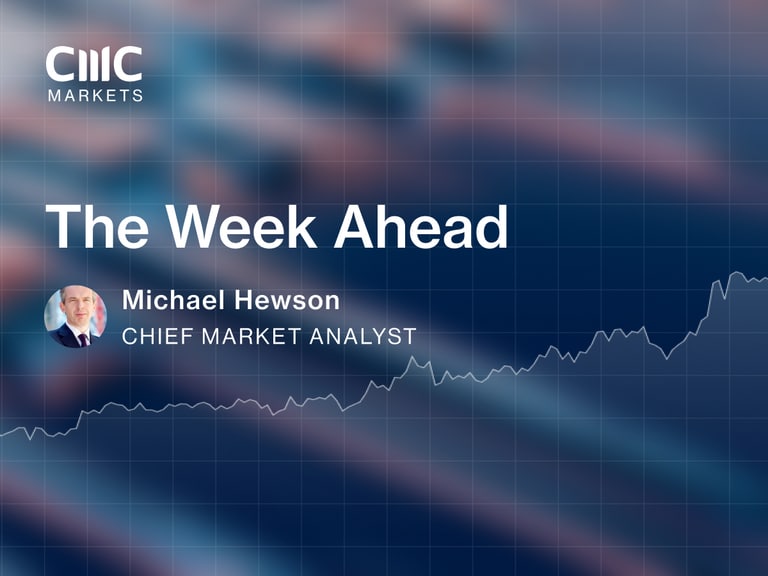The Fed halts rate hikes
Two main themes in October dominated the US stock markets: War-led risk-off sentiment and Fed-induced bond yield surge. The jittery conditions sent Wall Street into correction territory, with the S&P 500 and Nasdaq slipping 10% from their July highs. On a monthly basis, the Dow fell 1.36%, the S&P 500 slid 2.2%, and the Nasdaq slipped 2.78%.
On the earnings front, most US mega-cap companies beat earnings expectations, thanks to the improved macro environment in the September quarter. But tech stocks – who were the main drivers of gains this year - were mixed following their mixed results. with Microsoft, Netflix, and Amazon led gains, while Alphabet and Tesla were the laggards.
Whilst there have been corrections over the past few weeks, according to the FactSet report, the blended (year-over-year) earnings growth rate for the S&P 500 is 2.7% in Q3 of 2023, which will mark the first quarter of year-over-year earnings growth reported by the index since Q3 2022.
On 2 November, the Fed has halt raising interest rates for the second straight time as expected. Worsening budget deficit and rising economic uncertainties weighed on the decision. This could provide a rebounding opportunity in equities, particularly in the AI-powered tech sector. Consumer staple stocks are also worth attention to hedge economic risks on the rise of geopolitical uncertainties.
Also, investors will await the largest market cap tech giant, Apple’s overall year-on-year revenue growth declined for the third consecutive quarter due to softened demands for its iPhones. But an upside surprise could reverse the downtrend in Apple’s stocks, which account for about 7% of the S&P 500.
Another influential tech earnings will be from Nvidia, which will be on 21 November after the US market close (the morning of 22 November in the APAC time zone). Nvidia is seen as the king of the AI chip manufacturer. The overall revenue is expected to soar more than 171% year on year in Q3 fiscal year 2024.
Mining stocks may take a macro tailwind in the ASX
Mirroring Wall Street’s movements, the ASX 200 finished the month lower for the third consecutive month. The Australian benchmark index fell 3.8% in October and was off more than 9% from the July high.
Two sectors’ performances are worth noting in response to the Hamas-Israel war: Materials and Energy. Mining stocks were generally resilient and buoyed the material sector, especially in the gold miners, thanks to a surge in the prices of precious metals. The trend may continue in November if the mineral prices sustain the upside momentum.
Energy stocks may continue to benefit from the price volatilities in oil and gas. Some major stocks, such as Santos and Origin Energy, jumped since the war started in early October. Considering the global impact on commodity markets, the US Fed’s rhetoric and China’s upcoming economic data should be closely watched by investors and traders. The bank is very close to the end of its hiking cycle, which could offer support for the equity markets. The Australian third-quarter wage price index will also be released in November, which is seen as a key indicator for the inflation trajectory.
RBNZ may extend a rate hike pause
Both the New Zealand stock markets and the New Zealand dollar were badly hit by the global events. The NZX 50 was down 4.6%, and the dollar Traded Weighted Index (TWI), which measures the value of the NZD against the currencies of New Zealand’s major trading partners, fell nearly 3%.
New Zealand is one of the most vulnerable economies to global risks, including the Hamas-Israel war, the US bond jitters, and China’s economic stumbling due to its reliance on exports and the size of the economy. Plus, the lighter-than-expected third-quarter CPI added downside pressure to the Kiwi dollar. The data may encourage the RBNZ to hold on to the OCR for the fourth consecutive month in a row in November.
In November, the local equity markets and the New Zealand dollar could continue to be pressured by the risk-off sentiment. That could happen if the US Fed remains hawkish and China’s economic recovery stays faltering. However, a possible oversold market may provide a dip-buying opportunity in the local stocks.
Gold may be set to challenge an all-time high
Gold was a bright spot among the asset classes. Due to the Israel/Hamas war, investors rotated to haven assets to hedge economic uncertainties. Both spot gold and gold futures surged about 7% in October, briefly topping 2,000. The momentum may take it to hit an all-time high of above 2,080.
From a tactical perspective, the gold price is negatively correlated with the USD and the US government bond yields. Hence, a soft US dollar and easing bond yields could buoy the metal price and vice versa. Fundamentally, a more dovish-than-expected Fed’s tone can be a catalyst for gold to refresh the all-time high.
From a technical standpoint, gold may have been overbought in the past three weeks, which could lead to a pullback in the near term. The medium-term support can be found around the 50-day moving average of 1,918. But a bullish breakout of 2,000 could send gold to top a new high.
Crude oil faces downside pressure
The surge in crude oil was short-lived despite the ongoing Hamas-Israel war. Fears of a wider regional conflict abated amid efforts made to ease the tension. Oil traders may shift their attention from geopolitical tensions to economic uncertainties. These can include recent disappointing Chinese economic data, and the US production ramp-up to offset OPEC+’s output cuts. Global demands are being challenged by decade-high interest rates in major economies.
The price for WTI and Brent Crude oil fell into a range-bound movement between $80 and $96 per barrel since late August. The near-term trend is skewed to the downside as oil prices fell below the 50-day moving average in the last week of October. Looking ahead, crude oil may continue the range-bound movement on the balance of supply and demand.
Disclaimer: CMC Markets is an execution-only service provider. The material (whether or not it states any opinions) is for general information purposes only, and does not take into account your personal circumstances or objectives. Nothing in this material is (or should be considered to be) financial, investment or other advice on which reliance should be placed. No opinion given in the material constitutes a recommendation by CMC Markets or the author that any particular investment, security, transaction or investment strategy is suitable for any specific person. The material has not been prepared in accordance with legal requirements designed to promote the independence of investment research. Although we are not specifically prevented from dealing before providing this material, we do not seek to take advantage of the material prior to its dissemination.






